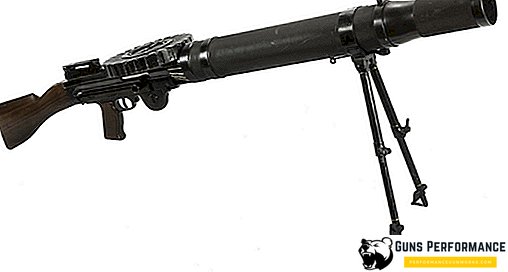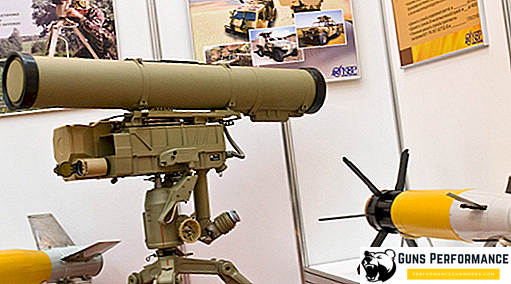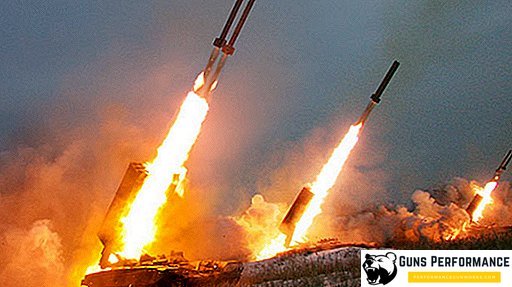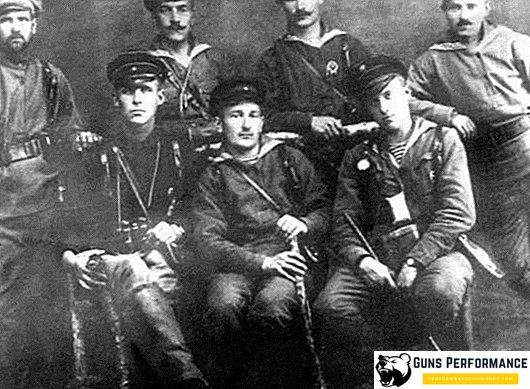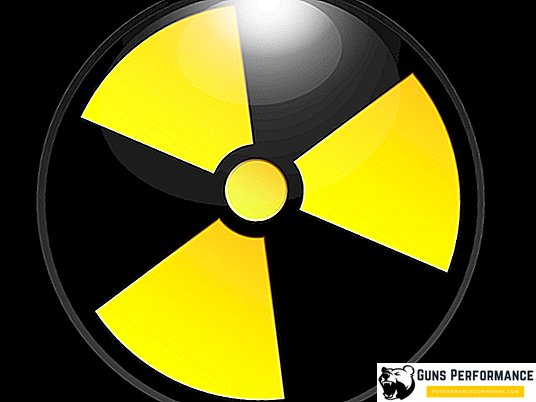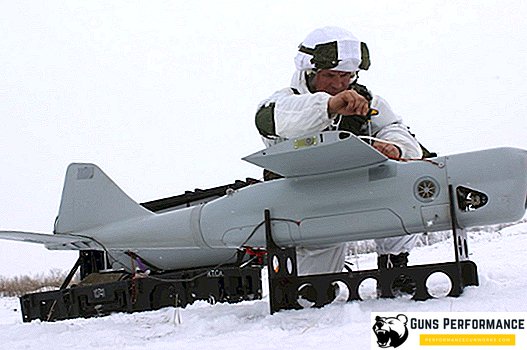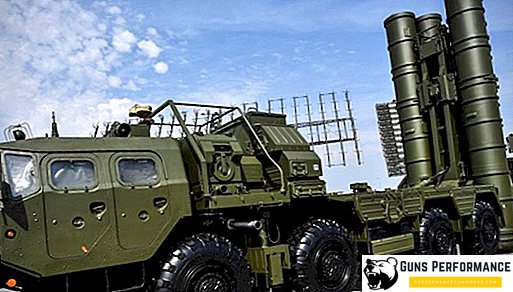Quite often on the shelves of museums in the exposition of ancient weapons can be found very unusual items - sticks with a metal chain, at the end of which is a weighty metal ball. This is a brush. The device may differ in design, size and equipment, but in any form it remains an impressive appearance. At first glance, it is difficult to imagine how it was worth using such a weapon and for what purpose it was used. However, the imagination rather colorfully draws the consequences of the use of such melee weapons in battle. It is not difficult to imagine what terrible wounds a heavy metal weight dangling on chains, equipped with sharp spikes, could inflict on the enemy.
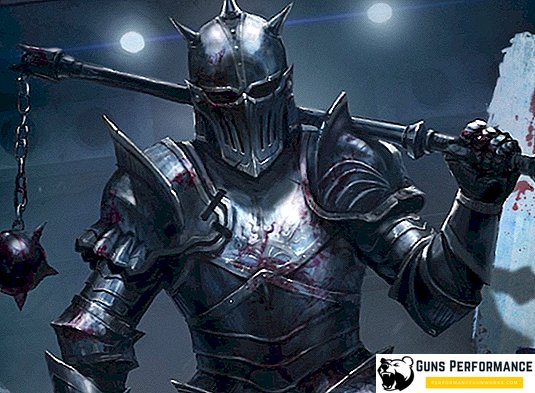
Where did such cold weapons come from
Judging by the shape, the brush is clearly designed for horse fights. This is due to the ease of weapons and its great mobility. The rider, skillfully handling such weapons and wielding the techniques of equestrian combat, could freely strike a sudden striking blow at the enemy. The backlash force was so strong that the enemy could easily be knocked out of the saddle. If the blow fell casually, the horseman who had restrained himself in the saddle was stunned for a while. From the smashing blow with a metal weight, only a shield could save. Warrior steel armor rarely provided a reliable defense against a deafening strike with a heavy weight in a combat collision. The large kinetic energy during the swing, multiplied by the weight of the weapon, ensured a tremendous force to strike. The only argument that could be opposed to such melee weapons, was to strike first.
It should be noted that during the battle, the brush was rarely used. It was rather an auxiliary weapon that the warriors used when it was impossible to use the main types of weapons. When a spear or spear was lost, a sword was lost, such a cold weapon, like a brush, became the last weighty argument for a warrior. However, many nobility warriors neglected the combat capabilities of such weapons, considering them to be a commoner’s weaponry.
The first information about the military use of the brush appeared in Europe already at the beginning of the XI century. Over time, it turned out that such a device, used as a melee weapon, is quite common in the world. The knights of medieval England, Germany and Italy of the Crusade period used weights on the chains. Muslims had a similar weapon. The heavily armed riders of the Salah ad-Din army used a brush in the confrontation with the knights - the crusaders. In ancient Japanese drawings and frescoes, you can see a brush on the samurai equipment.

In the form in which we represent these weapons, it appeared much later. Initially, it was a battle chain, very reminiscent of a device for threshing grain. Later attempts were made to modernize this type of cold arms, making it more respectable and representative. In Russia, this type of weapon was used during the campaigns of the Old Russian princes to Constantinople and in the battles with the Polovtsy and the Pechenegs. Old Russian warriors had on equipment the used types of these weapons and owned special combat techniques.
Kisten is a name with Slavic roots. You can interpret the meaning of this word in different ways, but the essence does not change. The weapon was put on the hand and activated by rotation of the hand. Given the fact that the Slavs for a long time had to fight the nomadic tribes of Turkic origin, we can draw an analogy with the Turkic name. "Kistan" in translation from Turkic language means "stick".

The popularity of weapons due to its simple design and low cost. The prototype combat kisteny - threshing stick, which is often used to arm the militia. Quickly identifying a fairly high efficiency of the device in battle, changed its shape. The stick was shortened, a chain began to cling to a beat made of animal bones. For rich warriors, a brush gets a metal beat. From the two-handed type, the weapon turns into one-handed, lighter and more flexible. Its shock-shattering effect is intensifying. In Russia, the name of the weapon was finally established, while in Europe such cold arms are called the Germanic mornings in the German manner.
Tactical specifications
In the usual combat version, the total length of the weapon was 45-55 cm. The brush consisted of a striking part — a blow, which could have been of a different execution. A stick or stick was usually made of wood. For noble warriors, it was customary to decorate the handle with various metal parts, giving the weapon a special value. The handle could be covered with leather for a comfortable grip. At the end there was a leather loop through which the brush was fixed on the wrist.

In medieval Europe, where there were the best technical conditions for the manufacture of metal cold arms, there are various models of kisten. The knights preferred to have a moronstern, which had a metal bead with steel spikes. Striking such an object on steel armor could be fatal to the enemy. Spikes easily punched armor and helmets. Among the warriors who owned these weapons, adhered to the following principle - one blow - one death.
The German Morgenstern or Kisten, which began to appear in the arsenal of private feudal armies, was made quite primitive and crude. Only with the beginning of the Crusades, when between the noble knights there was an unspoken contest as combat equipment, more noble samples of this weapon appear. The handle was absent at first. Chain with weights simply put on a wooden stick if necessary. In some embodiments, at the end of the chain there was a special hook - a bracket on which it was possible to fix some kind of load as a beat.
The noble cavalry, preferring to flaunt each other, introduced its innovations into the military equipment. The weapon becomes more refined. Particular emphasis is placed on the appearance of the weapon. Handles kisteny take more convenient for the grip shape, square or oval cross-section. For a warrior who was in the thick of hand-to-hand combat, it was important at the crucial moment not to let the weapon out of his hands. For a more effective use of cold arms in battle, in the manufacture of begin to take into account the standard weight of the shock.
For example: A lead beat the size of a walnut and weighing 200-300 g when struck on the backswing gave a force of 16 kg per cm2. One can only imagine what the warrior felt when he received such a blow.
To make a larger weight is not advisable. More weight entails greater effort. The inertia of a heavy blow created during the backswing can only harm the warrior himself. In addition, the kishen with a large weight in the battle was inconvenient. Time for a full swing could not be. The greatest effect was given short and biting, brush strokes.

Different types of weapons and principle of action
In a combat situation, a warrior must always adequately assess the strength and power of his weapon. Using cold weapons for other purposes, you can get fatal consequences, so if the enemy has superior weapons, a spear or a two-handed sword, the brush will be useless. It was convenient for riders to use such weapons only during an equivalent fight or when attacking a weaker opponent.
There is a certain typology that distinguishes this cold weapon into the following types:
- The first type is a cyst, equipped with an elongated, egg-shaped bone weight. This type can be attributed to the early period, when the first facts of the combat use of weapons appear (X-XII centuries);
- the second type is a shock-crushing weapon equipped with spherical copper or iron weights. Both smooth and faceted beats occur. In this form, the brush appears in the arsenal of soldiers at the end of the XII, at the beginning of the XIII century;
- the third type is a brush or morgenstern with clear dimensions for the handle and handles. On the lead or iron girth spikes or protrusions appear that enhance the damaging effect. This weapon is already firmly in the arsenal of warriors, starting from the XIII century.
It should be noted that with the appearance on the battlefield of warriors, chained in armor, bone beat loses its combat value. Equipping riders comes cold steel, made of metal parts. Due to the metal beat, the force and concentration of impact increases.

Improved and combat technique with the use of weapons of this type. Practiced techniques in which the brush can cause maximum damage to the enemy. The first blow is the most important. Subsequent defense of this type of weapon is almost impossible. Even the presence of the handle does not allow the warrior to successfully fend off retaliatory strikes. A dangling chain with a heavy load becomes an obstacle to the stable position of the weapon in the hand. The main variant of the combat use of this weapon is its combination with a sword. A horseman, well wielding both sword and brush, can simply crush his opponent with a rush. For the attack used a brush that allows you to strike on the head and even on the back of the enemy. The sword is designed for effective defense against retaliatory strikes.
However, this tactic is more suitable for knightly tournaments. In a real fight, a spear or battle ax is much more effective, not to mention swords. The brush was used extremely rarely, besides it was necessary to be able to use such weapons.
Historical combat experience
In the history of wars, the brush is rarely mentioned as the main weapon. The popularization of this cold weapon is more connected with the modern interpretation of the historical events of medieval Europe. Quite spectacular and spectacular should look rider, chained in knightly armor, waving dangling on a chain studded metal weight. In reality, such a spectacle was rare. It was customary to see such a weapon in the hands of the militias and commoners.
In Russian history, the military mass use of the brush falls on the struggle of the northwestern principalities against the Teutonic Order. Russian militia, composed of commoners and poor nobles, were armed with spears, pikes and brush. Such weapons were used against heavily armed Teutonic knights. A blow with a brush on the helmet or on the back, acted stunner on the riders. Suffice it to recall the victory of the Russian troops on Lake Peipsi, where Russian regiments together with the Novgorod militia defeated the Teutonic knights.

In direct encounter with the German knights, the Russian horsemen usually used axes and spears. In Europe, Kisten was actively used on the battlefield during the European crusades against the Czech Republic. The Hussite Wars were the first domestic wars, in which the main striking force was not the regular troops, but the people's militia. Hussite troops were armed with a variety of weapons, including the brush. The weapon looked like a steel heavy flail, capable of not only knocking the rider out of the saddle, but also crushing the first rows of the advancing enemy.
After the first fighting with the militia, the Czech nobility began to use the brush as an auxiliary weapon. The shock part began to be weighed and equipped with additional spikes. For better flexibility, reduced chain links, making the weapon more convenient for combat use.

The most legendary weapon of this type is a brush called the "morning star". It was a device with a heavy core on the chain. The shock part was studded with long spikes. In parallel with this type of weapon, there are varieties of a custen with three loads dangling on a chain. This approach is associated more with the psychological effect. To use these types of weapons in combat is almost impossible. Awesome view did not match the real combat power of such weapons.
Finally
If the combat use of the kysten can not be compared with the frequency of use of battle axes, swords and mines, then from the point of view of cultural value, weapons deserve a certain place in the historical arsenal. The shape of the weapon, its design causes respect. No wonder the old masters - gunsmiths tried to give their creations a special and attractive look. It was not known whether such a weapon was useful in battle or not, but in any case the brush would decorate the warrior's outfit.
As in the case of swords, rapiers and swords, the brush becomes a public weapon. Masters are working on his appearance constantly. The design could vary depending on the technical equipment of the weapons workshop. On the arms, on the weights it becomes fashionable to put a generic coat of arms, images of epic animals are applied. A brush, like a mace, becomes in some countries a symbol of higher military power.


